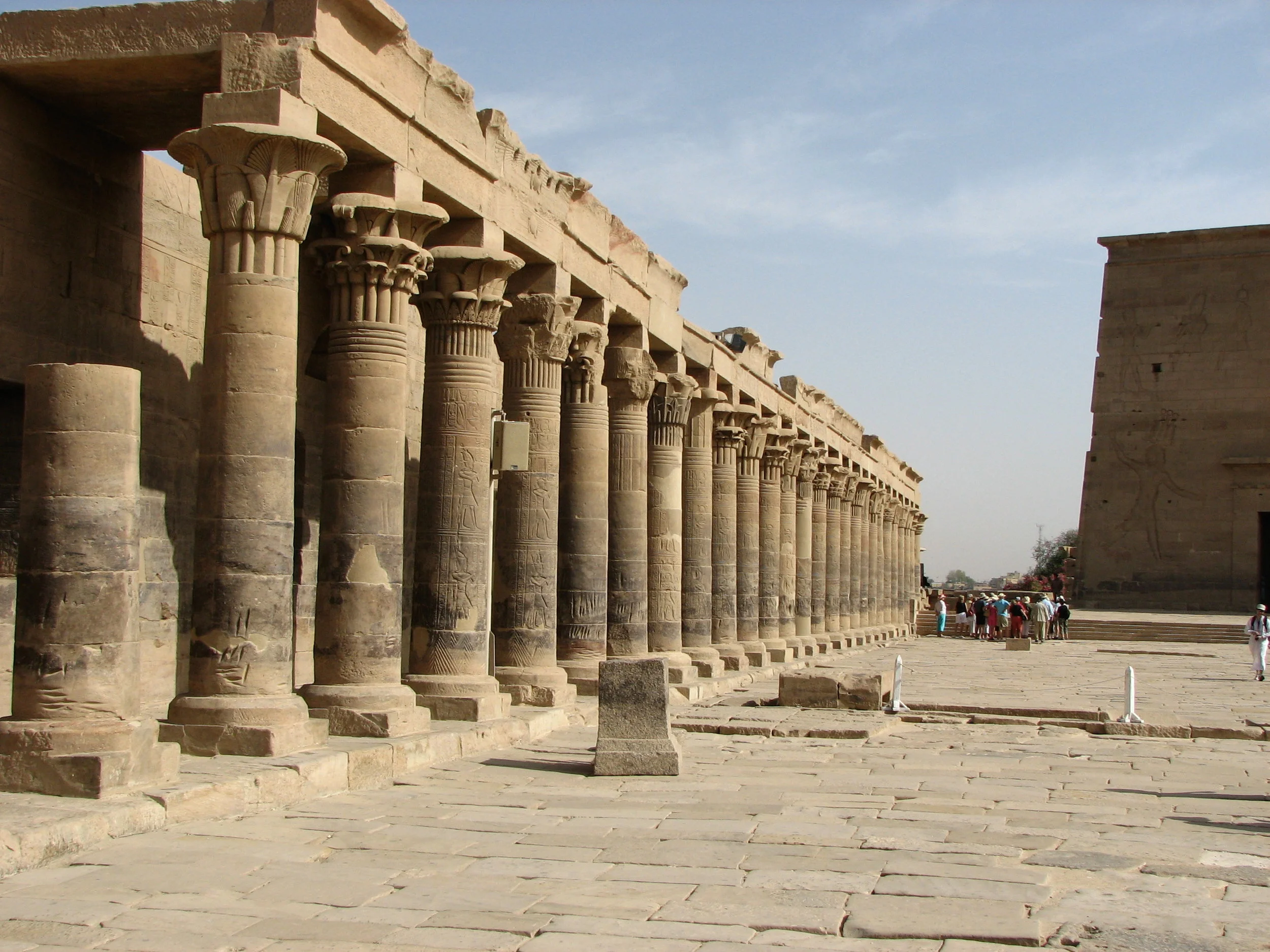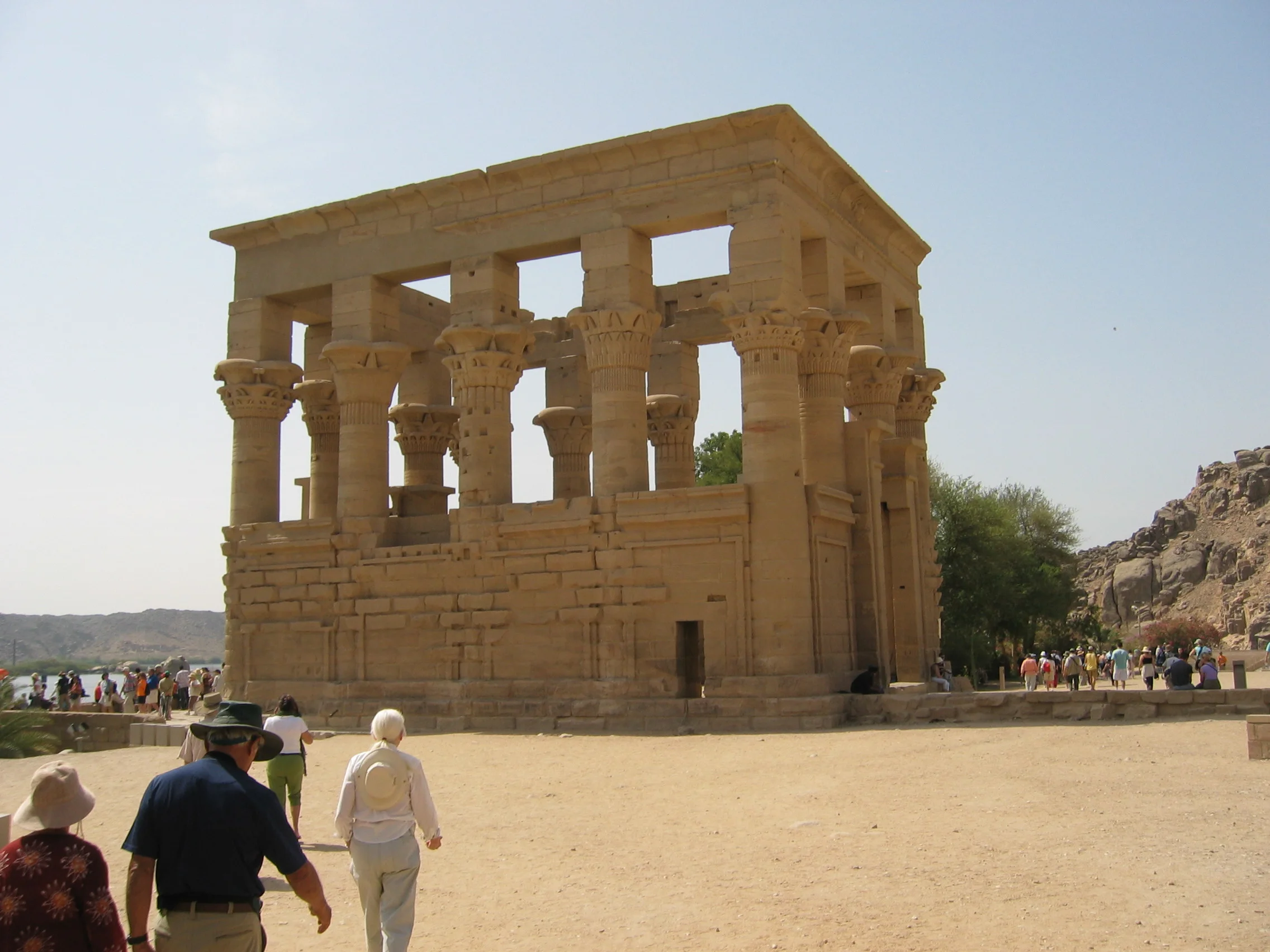Philae
We took a small boat out to Philae Island to see the Temple of Isis. Egypt has two kinds of temples: funerary and cult. This is a cult temple built about 2000 years ago. Isis was at one time the greatest of all Egyptian gods. Isis worship at Philae dates to about 690 BC but the oldest parts of the temple only date to about 380 BC. During the Roman Empire, Isis worship in Egypt rivaled Christianity and was practiced as far away as Britain. Isis worship was still being practiced at Philae as late as AD 550.
One of the most interesting things about this temple is that the whole temple was moved. After the Old Dam was completed in 1902, Philae Island was completely covered with water for half the year. Tourists still flocked here on boat tours and looked at the temple down below in the clear blue Nile waters. As the new High Dam was nearing completion, UNESCO organized and managed to disassemble, move, and reassemble the entire temple complex. It took from 1972 to 1980 to do this. So this is the real and original Temple of Isis, but it is really on nearby Agilkia Island, which was higher than Philae Island.
The temple is really a temple complex. Cult temples were built somewhat like a house in that they had an entrance way, reception area, many rooms, and rooms got more important as you went further into the temple.
The first photo is from our boat as we approached Philae Island. The second photo is from the other side of the temple which was where I could get the best shot of the entire main temple.
The third photo is of the outer temple court with the columns that the Romans added in the later years. I found this interesting as I’m not sure that I knew the Romans had been in Egypt.
Again, this is a temple complex which includes pylons, other temples, courtyards, chapels, halls, gates, and more. The next photo is the Kiosk of Trajan or “Pharaoh’s Bed”. It’s a famous monument which was frequently painted by Victorian artists.
The next photo is the second pylon which was smaller than the first pylon, but still quite large. You can see some of the reliefs carved into the stone which were also quite large. The carvings are usually of gods or pharaohs and tell about famous deeds or battles or stories etc.
The last photo is more reliefs carved on the inside of the temple. The walls, columns, and even the ceiling had carvings covering much of the surfaces. This might be a good time to point out the Egyptian style of bas relief carvings. Egyptians almost exclusively show figures in profile. The Egyptians felt that the “profile” of the body and particularly the face was the best way to show people or gods or pharaohs or animals. If you notice, they did distort the face and body somewhat in order to show figures – so while it is almost always in profile, it’s not really entirely accurate profiles.
P.S. We went back to the Temple of Isis the next night for a sound and light show. It was pretty good. A woman sitting right in front of us passed out from heat stroke. She was laying prone with her husband comforting her and their guide fanning her for the whole show and she was still lying prone when we left, which was probably about 9:00 pm. It was still that hot – even at night.






